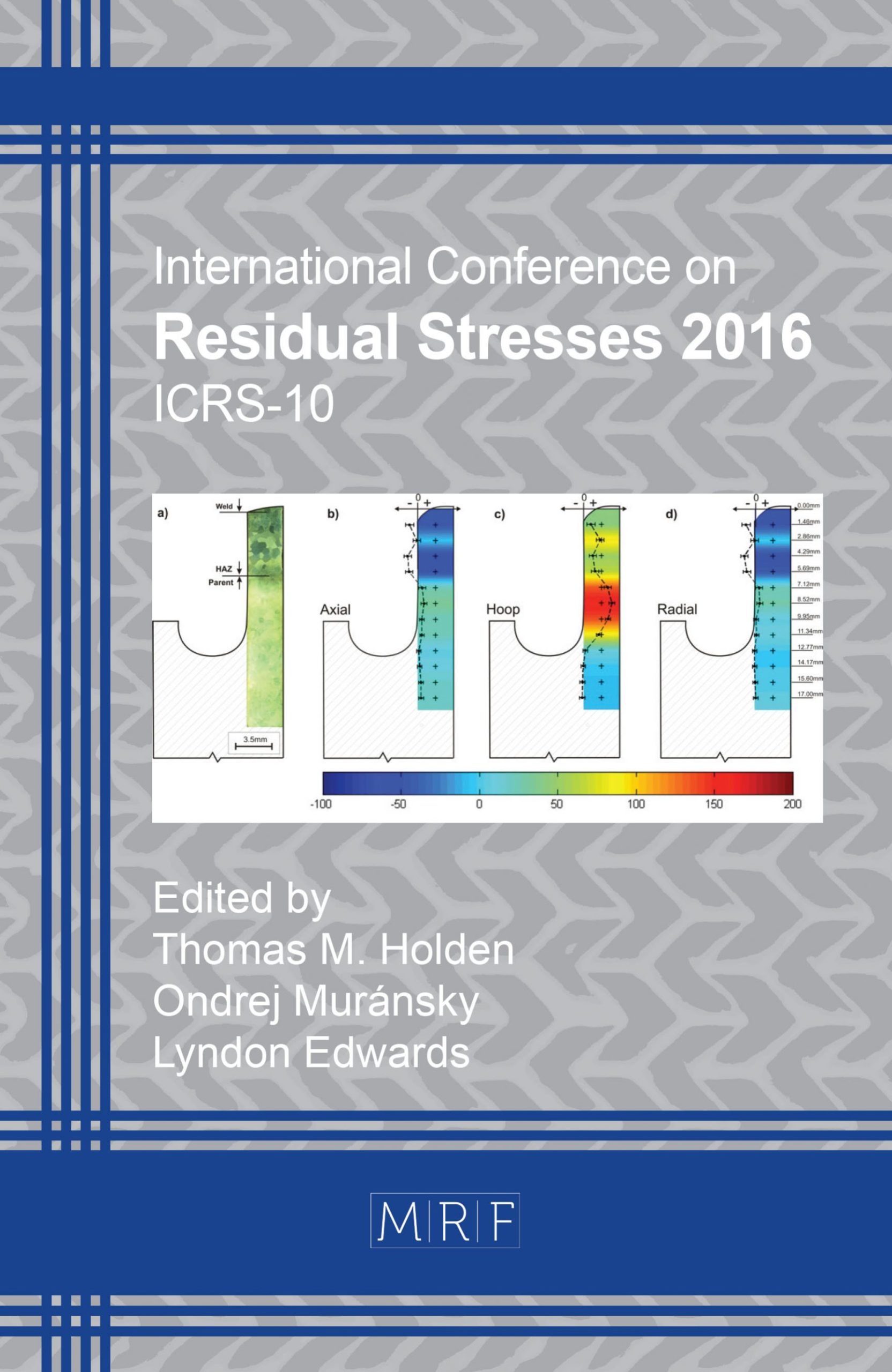Comparison of Two X-Ray Residual Stress Measurement Methods: Sin2 ψ and Cos α, Through the Determination of a Martensitic Steel X-Ray Elastic Constant
D. Delbergue, D. Texier, M. Lévesque, P. Bocher
download PDFAbstract. X-ray diffraction technique for residual stresses measurement is usually associated to the sin2 ψ method, a method based on the interception of the diffraction cone and line detectors. To overcome this loss of information, the cos α method is an alternative method which uses a single exposure to collect the entire diffraction cone via a 2D detector. The present paper compares both sin2 ψ and cos α methods, through the X-ray elastic constant (XEC) determination of a quenched and tempered martensitic steel. The full-cone measurement method demonstrates a smaller scatter and a better repeatability of the measurements. This latter point is of considerable interest since larger scatter in XEC may result in large variation in residual stress values, especially at high stress levels.
Keywords
X-Ray Diffraction, Residual Stresses, X-Ray Elastic Constant, Single Exposure
Published online 12/22/2016, 6 pages
Copyright © 2016 by the author(s)
Published under license by Materials Research Forum LLC., Millersville PA, USA
Citation: D. Delbergue, D. Texier, M. Lévesque, P. Bocher, ‘Comparison of Two X-Ray Residual Stress Measurement Methods: Sin2 ψ and Cos α, Through the Determination of a Martensitic Steel X-Ray Elastic Constant’, Materials Research Proceedings, Vol. 2, pp 55-60, 2017
DOI: http://dx.doi.org/10.21741/9781945291173-10
The article was published as article 10 of the book Residual Stresses 2016
![]() Content from this work may be used under the terms of the Creative Commons Attribution 3.0 licence. Any further distribution of this work must maintain attribution to the author(s) and the title of the work, journal citation and DOI.
Content from this work may be used under the terms of the Creative Commons Attribution 3.0 licence. Any further distribution of this work must maintain attribution to the author(s) and the title of the work, journal citation and DOI.
References
[1] B.D. Cullity, Elements of X-ray diffraction, Addison-Wesley Publishing Company, Inc., 1956.
[2] I.C. Noyan, J.B. Cohen, Residual stress measurement by diffraction and interpretation, Springer-Verlag, New York, 1987.
[3] S. Taira, K. Tanaka, T. Yamasaki, A method of X-ray microbeam measurement of local stress and its application to fatigue crack growth problems, Journal of the Society of Materials Science, Japan, 27 (1978), pp. 251-256 (in Japanese).
http://dx.doi.org/10.2472/jsms.27.251
[4] K. Hiratsuka, T. Sasaki, K. Seki, Y. Hirose, Development of measuring system for stress by means of image plate for laboratory X-ray experiment, JCPDS – International Centre for Diffraction Data, 46 (2003), pp. 61-67.
[5] P.S. Prevey, A method of determining the elastic properties of alloys in selected crystallographic directions for X-ray diffraction residual stress measurement, Adv. in X-ray Analysis, 20 (1977), pp. 345-354.
http://dx.doi.org/10.1007/978-1-4613-9981-0_30
[6] V. Savaria, F. Bridier, P. Bocher, Measuring in-depth residual stress gradients: the challeng of induction hardened parts, in: S.J.B. Kurz, E.J. Mittemeijer, B. Scholtes (Eds.), International Conference on Residual Stresses 9 (ICRS 9), 2014, Garmisch-Partenkirchen, Germany.
[7] V. Savaria, F. Bridier, P. Bocher, Predicting the effects of material properties gradient and residual stresses on the bending fatigue strength of induction hardened aeronautical gears, International Journal of Fatigue, 85 (2016), pp. 70-84.
http://dx.doi.org/10.1016/j.ijfatigue.2015.12.004
[8] P.S. Prevéy, X-ray diffraction residual stress technique, in: R.E. Whan (Ed.) Materials Characterization, ASM International, 1986, pp. 380-392.
[9] K. Tanaka, Y. Akiniwa, Diffraction Measurements of Residual Macrostress and Microstress Using X-Rays, Synchrotron and Neutrons, JSME International Journal Series A, 47 (2004), pp. 252-263.
http://dx.doi.org/10.1299/jsmea.47.252
[10] ASTM, E1426-98 Standard Test Method for Determining the Effective Elastic Parameter for X-Ray Diffraction Measurements of Residual Stress, 2009.
[11] A.S.M.Y. Munsi, A.J. Waddell, C.A. Walker, A Method for Determining X-ray Elastic Constants for the Measurement of Residual Stress, Strain, 39 (2003), pp. 3-10.
http://dx.doi.org/10.1046/j.1475-1305.2003.00044.x































